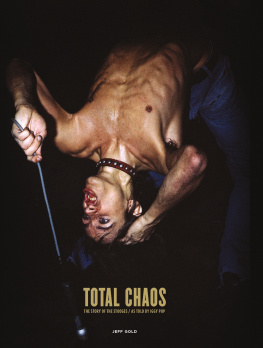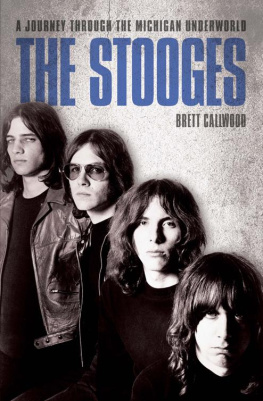
Baltimores Hippodrome was the September 1947 venue for one of the most unlikely pairings in show biz history: the headlining Stooges and Velvet Fog jazz vocalist Mel Torme. Plus, more musical acts and a wolfs-eye view movie, too!
Photo courtesy of Ted Okuda

Copyright 2011 by David J. Hogan
All rights reserved. No part of this book may be reproduced in any form, without written permission, except by a newspaper or magazine reviewer who wishes to quote brief passages in connection with a review.
Published in 2011 by Applause Theatre & Cinema Books
An Imprint of Hal Leonard Corporation
7777 West Bluemound Road
Milwaukee, WI 53213
Trade Book Division Editorial Offices
33 Plymouth St., Montclair, NJ 07042
Images are from the authors collection unless otherwise specified.
Book design by Snow Creative Services
Library of Congress Cataloging-in-Publication Data
Hogan, David J., 1953
Three Stooges FAQ: everything left to know about the eye-poking, face-slapping, head-thumping geniuses / David J. Hogan. 1st paperback ed.
p. cm.
Includes bibliographical references.
Includes filmography.
ISBN 978-1-55783-788-2
1. Three Stooges films--History and criticism. 2. Three Stooges (Comedy team) I. Title.
PN1995.9.T5H64 2011
791.430280922dc23
2011030907
www.applausebooks.com
For Larry Fine and Suzanne Ridgeway

Moe Howard, Larry Fine, Shemp Howard, Suzanne Ridgeway
Photo courtesy of the Stoogeum
Contents
The author thanks
Larry Fine, for taking the time to tell me things;
Moe Howard, for being patient;
Gary Lassin, for image access, and for keeping the faith with the fabulous Stoogeum;
Teresa and Mark A. Miller, for friendship, encouragement, and images;
Ted Okuda, for friendship, encouragement, information, and imagesand for filling me in on Four Eleven Forty Four;
Ron Penfound, Clevelands Captain Penny, for being nice to kids;
Rob Rodriguez, for friendship, and for getting this whole thing rolling;
the art and editorial staffs at Applause, for encouragement and jobs well done;
www.threestooges.net, for being the only Stooges site youll ever need;
and
Kim, Patrick, Rachel, and Ian, for being patient.
The foundation of the legendary comedy act known as the Three Stoogesthe shining, warm-to-the-touch sweet spotis the work the team did from 1934 to 1957, as employees of Columbias two-reel unit. In little fifteen- to eighteen-minute films shot in as many as four days and as few as one, Moe, Larry, Curly, Shemp, and Joe created the body of work that has ensured their immortalityto the dismay of moms everywhere.
Throughout their careers the boys did numberless live appearances, but most of those went unrecorded, and the roster of people who saw the boys first-hand dwindles by the day. Almost inevitably, then, the 190 short films are what make the Stooges the Stooges.
What the Stooges Areand Are Not
This book explores the boys personas and comic technique in discussions of individual shorts, but we should pause here to consider their appeal. They were aggressive, physical comics from vaudeville whose humor was based on personal and bodily insult. Short, dumpy, and (after a while) middle-aged, they never traded on youthful innocence, like Stan Laurel or Harry Langdon; or on subtle, mutual fondness, like Stan Laurel and Oliver Hardy. They never projected a comically dignified elegance, like Charley Chase, nor did they traffic, like Buster Keaton, in stoic existentialism. They seldom explored surrealism, as the Marx Brothers did, and they lacked the physical grace and sheer inventiveness of Charlie Chaplin. Although very effective with dialogue, the Stooges never were glib patter comics like Bob Hope or Danny Kaye.
And unlike Thelma Todd or Mabel Normand, they certainly werent beautiful.
As you watch the Stooges, you get the impression, from time to time, that the boys are fond of each otherusually when one of them appears to have taken a fatal tumble from a window, and the two who remain burst into tears. Most always, though, their comedy was built around interpersonal conflict. On screen, the boys were violent, petty, and antagonistic. Simple carelessness often brought unpleasant consequences. The Stooges were opportunists who regularly stole from and swindled each other. But the boys took quick offense at the slights and hostility of strangers, and banded together to gain the upper hand on those unlucky troublemakers.
Among comics of the Stooges era, only Bob Hope rivals the boys for enormous, and unwarranted, sexual self-confidence. Many great screen comics seem almost androgynous (Langdon comes to mind), but the Stooges were ferociously heterosexual. Puffed up with delusions of their sex appeal, the boys pursued anything in skirtsand nearly always got the brush-off or a slap in the face.
Like all great comics, the Stooges didnt quite grasp how the world works, as witness those frequent collisions with women, as well as with cops, employers, banks, insurance companies, landlords, and even the stray dog on the corner.
Things often failed to work out for the boys, who never appeared to care that their understanding of the world was limited and unsatisfactory. Theyd squash each other, and be squashed by other people and by the system itself, and they always came back for more, having learned nothing from their earlier missteps and punishments.
So why are they funny? On the one hand, we laugh because the Stooges embody many of our worst instincts, such as the desire for petty revenge. They do things thatwow!we really wish we could get away with.
On the other hand, we love the boys because they knew how to end up on the side of the angels, whether by helping a family regain a stolen deed, struggling to become gentlemen, or (miraculously) getting the best of professional criminals and handing them over to the cops.
Despite the failings of personality that were built into every script, we knew that the Stooges were good.
How This Book Works
Organization of chapters is discretionary but not cavalier. Because the boys first Columbia short, WomanHaters, is about male-female relations, Chapter 3 became The Stooges and the Fairer Sex. Short number two, Punch Drunks, is about boxinghence the theme of Chapter 4, The Stooges and the Sporting Life.
In all, I identified thirteen overriding themes in the Stooges two-reel work, for thirteen theme chapters (of fifteen), which you can examine in the table of contents.
Within each chapter, relevant shorts are discussed in chronological order. Exceptions to this are when a short was remade or reworked later; in such instances, discussion of the later short follows immediately after discussion of the original.
At appropriate places within each chapter, sidebars celebrate actors and actresses who made important contributions to the Stooges career.
The main body of the book begins with biographical and early-career information about the Stooges, plus notes on Columbia Pictures, the studios two-reel department, and the importance of short subjects to studios and exhibitors. These chapters are not extensive. Family members and the boys themselves wrote about the Stooges lives, and some excellent books (noted in the bibliography) detail the workings of Columbias two-reel unit.
Next page














